Introduction
Wether we use famous, experts or ordinary people, is a question that has crossed the mind of several researchers, interested in studying endorsement in advertising. Reviews of literature show that the embodiment of products in idealized models is a widespread phenomenon (Radu, 2006). As a matter of fact, advertising campaigns featuring idealized models, transfer unattainable beauty standards. In addition, the majority of the audience doesn’t fit the ideal body (Radu, 2004); which inhibits the phenomenon of identification (McGuire, 1985). Moreover, it can cause adverse effects on the self-concept of women recipients (Bower et al , 2001; Alipoor et al 2009; Tucci et al, 2008 , Cohen , 2006; Van den Berg et al , 2007; Durkin et al 2002; Tiggemann et al , 2003).
In this regard, we conclude that the upward comparison with idealized models is not a persuasive lever boosting purchase intent. It is rather with favorable self-comparison that advertising can influence beliefs and behavioral intention (Bandura, 1977).
Apart from resorting to idealized models, academic literature has also attested another phenomenon, which is celebrity endorsement (Erdogan, 1999). The excessive use of celebrities is justified in the expression “what is beautiful is good”. In fact, with their beauty, celebrities make the product more attractive and appealing, motivating consumers to pay attention to advertising messages. This behavior is indeed developed in the study of Kammoun, 2008. The choice of product or brand is based on the “emotional feeling” rather than the relational one. (Tlili, 2010).
This is why designers refer to celebrities and spend money prodigiously for their sake (Jaoued et al, 2007) since the challenge is worth it. Advertisers refer to stars (Zinedine Zidane, Nicole Kidman, David Beckham) in order to inculcate brands in consumers’ minds, and to support their vaunted brands which operate in a highly competitive environment (Fleck-Dousteyssier, et al, 2006).
Celebrity endorsement is certainly a way to fight against the commoditization in saturated markets and thwart competition (Fleck-Dousteyssier, 2004), but it is not the right device to accelerate the process of persuasion.
Some risks are raised against advertising by literature putting celebrities in scene. The first one is inherent to the vampirization’s product by celebrity. In fact, highly attractive models (HAM) monopolize the attention of exposed persons (Till et al, 1998), which contributes to the neglect of the brands in question (Kotler et al 2006).
The second risk is financial, companies spend much money of favor of celebrities ($ 3.6 million for Nicole Kidman, 60 million for Bekham, 1.5 million for Zineddine Zidane) (Kotler et al 2006). This could adversely affect management in the crisis time (Chakroun et al, 2013).
Another risk is related to celebrities’ life. In fact, any negative information about celebrity produces negative effects on brand’s attitude, and reduces the credibility of spokesperson (Till et al 1998). Tripp et al (1994) highlight another risk associated with the overexposure of stars to endorsing of various products.
Relatively to risks cited above, we assume that the model of “ordinary woman” could be the solution for recipients seeking identification. It can also be a good way for managers to stand out from competitors who don’t stop using celebrities (Chakroun et al, 2013).
In this study, we presume that the archetype of “ordinary woman” “OW” meets the requirements of a successful advertising campaign for various product categories.
The central question of the research is:
Could the OW be a reference to designers for all types of products?
Goal of this paper
Our target is to study the correspondence between OW and the various products offered via the KERNEL’s method.
Methodology
Primarily, we conducted a qualitative study with 30 individuals to extract assertions concerning Tunisian perception towards “ordinary” women. The corpus of data has been the subject of a prioritization to identify the profile of the ordinary woman via KERNEL’s method (Chakroun et al, 2012).
Secondly, we asked participants to locate statements with tokens corresponding to the characteristics of women representing the products in question.
Procedure of Analysis of Dominance (AD)
“AD is a procedure to direct prioritization using the artefact of the Plateau of Dominance also called “play mat”. It allows the understanding and the explanation of a phenomenon involving many opinions and conflicting preferences. At the beginning of the exercise, each participant has 60 suggestions which he is supposed to rank on the board. We have obtained these propositions from the first exploratory research using Tropes software. The propositions to prioritize, are in the form of cards and each participant is asked to classify these cards on an area of 100 silent squares spread on four quadrants labeled “I don’t agree that the statement corresponds to the ordinary woman,” “I more or less agree that the statement corresponds to the ordinary woman, “” I agree that the statement corresponds to the ordinary woman “and” I fully agree that statement corresponds to the ordinary woman.” The packet of cards is shuffled in each exercise before ranking on the board, so we avoid the effect of list of a questionnaire. Unlike other methods, we notice that the interviewee is more involved in the method because he/she is required to read the items many times before each ranking and his/her responses will be more refined in this case” (Chakroun et al, 2012, p. 2)
Results
For men surveyed “ordinary woman” refers to the conservatism, the social conformity, the traditional woman who cares about her husband and her children.
However, for the women interviewed, the vision is different because the profile of the “ordinary woman” is determined by the physiological characteristics such as size, beauty, silhouette and psychological characteristics such as personality (openness, the objectives sought, complacency …).
For women, an “ordinary woman” is a “quiet” woman. She isn’t seeking for idealism. She is natural; she arose in the society through her values. Her work allows her to express her independence and openness when she feels the need.
As for beauty, we find that the ordinary woman lies on a continuum. This is not the woman unnoticed in the molten mass that no one can notice her neither this person who spends his time between the hairdresser and beautician. Thus, she was this woman with an average beauty that we associate it to the natural beauty.

Second Result
After having prioritized the cards, participants are requested to mark the statement with tokens corresponding to five types of products: luxury product (watch with diamonds), durable product (car), a mass consumption product (pasta) an electronic product and service (hotel). The statement marked means that it is a factor that could trigger an interest or a purchase of the proposed product.
This approach allows us to distinguish the characteristics of the woman in such type of advertising. Moreover, using this approach, we can identify the coherent positioning with the OW. This is typical when the “tokens” are located in the northeast quadrant of the graph (and consensual important characteristics).
Characteristics of a Model Representing a Luxury Product
Respondents are requested to mark the contents of the card with a blue token corresponding to the characteristics of the woman representing a luxury product such as a watch with diamonds.
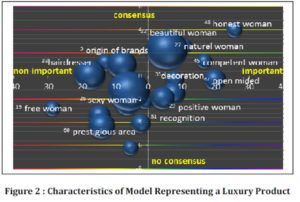
From this card, we identify four images of women:
1-The natural, honest and competent woman: a figure very close to the OW.
2-The positive and worried women: she attaches an importance to her beauty. She is an open-minded woman and seeking for social recognition: a figure far from the OW.
3-The sexy and free woman who lives in prestigious areas: A non-ordinary woman (NOW) referring to Tunisian perceptions.
4-The beautiful woman who accords an importance to her beauty and pays great attention to the origin of brands: A figure that doesn’t match the image of the OW
According to the size of the spheres, we note that participants attach more attention to the physical attractiveness of the model in terms of beauty and seduction at the expense of competence and honesty.
According to the two figures above (Figure 3 and 4), we find a strong consensus related to the model’s beauty for the embodiment of a luxury product like a watch with diamonds. If we presume that beauty is a central factor in the performance of this type of product, a beautiful woman will be able to fulfill this task. However, we note that there is also a tendency for men and women which recommend some attractive and positive women. Thus, it is the NOW who is requested.
As a consequence, two types of models of women are solicited to make a very luxurious advertising: OW and NOW. We have assumed this result because participants differ by gender, age and job.
Characteristics of a Model Representing a Car
In this section, participants are invited to spot the contents of the cards with red tokens corresponding to the characteristics of women who could represent a car.
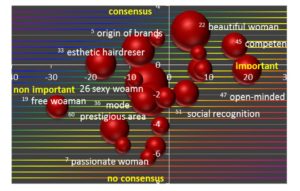
Figure 3: characteristics of woman representing a car
Viewing this card, we note that model’s attractiveness has a great importance in terms of beauty and seduction. Nevertheless, some women seek competence and openness to advertise a car as shown in Figure 6.
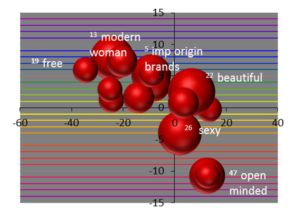
Figure 4: Perception of Men Regarding Woman Representing a Car

Figure 5: Perception of Women Regarding Woman Representing a Car
Characteristics of Women Representing Pasta
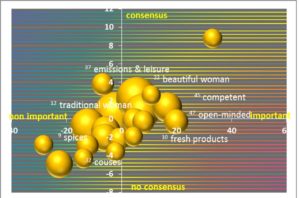
Figure 6 : Characteristics of women representing pasta
Participants are required to mark the contents of the card corresponding to the characteristics of women who may represent pasta with yellow token.
According to figure7, we observe that there is a close relationship between the spheres and a concentration in the diagonal. Referring to the size of the spheres, we note that this woman must be beautiful, competent and open-minded. This image is closer to the OW.
According to some participants, this is the beautiful wife and competent woman that we meet in souks, supermarkets and so forth (see Figure 9 and 10).
In addition, participants consider that’s necessary to appeal to the traditional woman for advertising pasta (see Figure 8). This is the woman who is very attached to our customs and
traditions. Some of the respondents have a tendency to recommend a “non-ordinary” woman as the modern and seductive woman to promote pasta (see Figure 8)

Figure 7 : Perception of Men Regarding Woman Representing Pasta
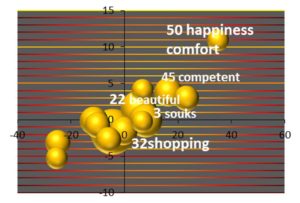
Figure 8 : Perception of Women Regarding Woman Representing Pasta
Thus, we recommend designers to use this model of woman for the embodiment of the product. This model will be a mixture of both the OW and the traditional woman.
Characteristics of Woman Representing an Electronic Product

Figure 9 : Characteristics of Woman Representing an Electronic Product
Participants are asked to mark the contents of the card with green tokens corresponding to the characteristics of women which may represent an electronic product.
Referring to the card above, we find a dispersion of spheres in the four quadrants; however, the larger bubbles are in the quadrant of the OW.
According to the interviewees, an electronic product requires its embodiment into a beautiful, natural open-minded, competent and honest woman. This is an image closer to the archetype of OW.
NOW, the very attractive woman is also marked for the representation of an electronic product (see Figure 12). This implies the presence of two archetypes of women recommended by participants for advertising an electronic product.
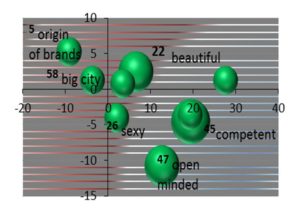
Figure 10: Perception of Men Regarding Women Representing Electronic Product
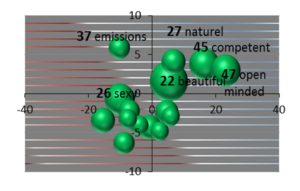
Figure 11 : Perception of Women Regarding Women Representing Electronic Product
Characteristics of Woman Representing a Hotel
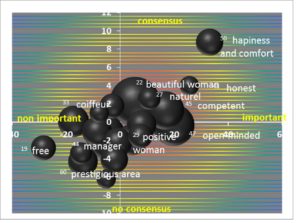
Figure 12 : Characteristics of Woman Representing a Hotel
Respondents are invited to mark content’s card corresponding to the characteristics of women representing a hotel with black tokens.
Referring to Figure 14, we observe a concentration of spheres in the diagonal. The largest bubbles are in the part of the beautiful woman, natural, positive, competent, open-minded and honest woman. This image is very close to the archetype of OW.
By observing Figures 15 and 16, we register a difference of perception between men and women regarding the advertisement of a hotel. Women see that the embodiment of an electronic product is possible with OW. On the contrary, men perceive that OW is incongruous to praise the merits of a hotel. For them, the modern and free woman also is more congruous for this type of product.
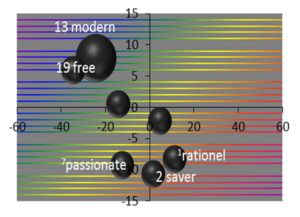
Figure 13 : Perception of Men Regarding Woman Representing A Hotel
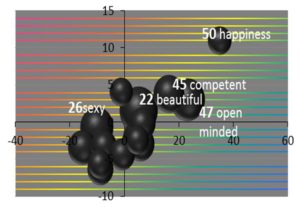
Figure 14 : Perception of Women Regarding Woman Representing a Hotel
Conclusion
Regarding these results, we note that the physical characteristics of the model and the values are at the top of graph. However, issues such as family, culture, consumption and geographical area were down. However, this is an overall cumulative. It doesn’t indicate what type of advertising markings relate or on which quadrant they are.
This is an indication that the physics of women are very important, both for the “ordinary” and “non-ordinary” women (see Figure 17).
In general, the examination of scatterplots shows a big difference between men and women. Indeed, women still have a provision Northeast / Southwest for all advertising. It means that, they tend to place their preferences on the part of the neighborhoods with the ordinary woman (OW) or her against image. However, for men (except for pasta and hotel services), they are on / Southeast diagonal Northwest. They place their preferences on non-ordinary woman (NOW).
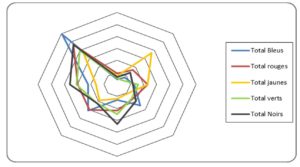
Figure 15 : Marking Assertions Classified By Themes
According to these results, we note that the archetype of OW fit more food like pasta than other types of product as luxury goods (watch with diamonds), durable goods (car) a service (hotel) or an electronic product.
This paper is certainly a cornerstone in the building of the endorsement in advertising but as all research is exempt from limitations. Indeed, we merely content ourselves with positive assertions concerning the OW. Hence in this context, we recommend to use another exploratory study to identify the characteristics of the models of women in advertising and then, compare the results from this research.
We also propose to extend this study to investigate the possibility of involving the OW, in order to become a participant in the process of advertising persuasion. We would also consider how consumers will perceive first, a message from an “ordinary” woman process thereafter the information conveyed by the character, and then form an attitude towards a product food. A paper that could reveal the analysis of mechanisms which underlie the effect of OW on the attitude of a consumer and his/her purchase intention.
References
1. Alipoor S, Moazami GA, Nezhad MZ and Zahari L (2009) “Analysis of the Relationship between Physical Self-Concept and Body Image Dissatisfaction in Female Students”, Journal of Social Sciences, 5(1), 60-66.
Publisher – Google Scholar
2. Bandura A (1977) “Self-efficacy: Toward a Unifying Theory of Behavioral Change”, Psychological Review, (84), 191-215.
Publisher – Google Scholar
3. Bower A. and Landreth S. (2001) “Is Beauty Best? High versus Normally Attractive Models in Advertising”, Journal of Advertising, 30 (1), 1-12.
Publisher – Google Scholar
4. Chakroun I, Kammoun M and Pauly B (2013) “Profil de la femme ordinaire : une etude exploratoire”, Revue des sciences de gestion, 48 (261-262), 45-50.
Google Scholar
5. Chakroun I, Kammoun M and Pauly B (2012) “Image of an Ordinary Woman: a Comparative Study”, Journal of Marketing Research and Case Studies, 2012 (2012).
Google Scholar
6. Chakroun I, Kammoun M and Pauly B (2012) “Traits saillants de la femme “, The proceedings of 18th IBIMA Conference, 9-10, Istanbul Turkey.
7. Cohen BS. (2006) “Media Exposure and the Subsequent Effects on Body Dissatisfaction, Disordered Eating, and Drive for Thinness: A Review of the Current Research”. Mind Matters: The Wesleyan Journal of Psychology, 1, 57-71.
Google Scholar
8. Erdogan BZ (1999) “Celebrity Endorsement: A Literature Review”, Journal of Marketing Management, 15, 291-315.
Publisher – Google Scholar
9. Fleck-Dousteyssier N (2004) « Une application des Modèles de Traitement de l’information au parrainage : Le Rôle de la congruence », Journées Thématiques du Nord Est de la France sur la communication Marketing, 1-18.
Google Scholar
10. Fleck-Dousteyssier, N, Korachia M and Luchez S (2006) « Les Célébrités dans La Publicité : le Rôle de La Congruence, Congrès AFM 11&12, 1-21
Google Scholar
11. Herrmann N and Timbal-Duclaux L (1989) La mesure des dominances cérébrales, Communication et langages, (80), 52-72
Google Scholar
12. Kammoun M (2008) « Efficacité de la publicité : un état de l’art », Revue des sciences de gestion, 43(229), 111-119.
13. McGuire WJ (1968) Nature of Attitudes and Attitude Change, Handbook of Social Psychology, MA: Addison Wesley.
14. Jaoued, L and Chandon, JL (2007) « Effet de l’endossement par les célébrités sur l’image de marque : Rôle médiateur de la congruence avec l’image de soi », Actes du colloque de l’AFM, 1-31
15. Radu M ‘(2004) « De la Comparaison sociale à l’intention comportementale. Les publicités pour produits cosmétiques amincissantes », Questions de communication, 5, 103-114.
Google Scholar
16. Radu M (2006) « La comparaison sociale avec les femmes mannequins : un face à face stimulant ou dangereux ». Marketing et communication, 1, 56-70.
Google Scholar
17. Rébeillard S and Kreweras C. Le Kernel, (2006) Origines et Fondements. Solomon M (2005), Comportement du consommateur, Pearson Education, 6ième Edidition, ISBN 2-7440-7135-8.
18. Tiggerman M. (2003) “Media exposure, body dissatisfaction and disordered eating: Television and magazines are not the same”, European Eating Disorders Review, 11, 418-430.
Publisher – Google Scholar
19. Till BD and Schimp T (1998) “Endorsers in advertising: the case of negative celebrity information”, Journal of advertising, 27 (1), 67-82.
Publisher – Google Scholar
20. Tlili Turki H (2010), «Les antécédents explicatifs de la nature du mode de choix d’un produit», Revue des sciences de Gestion, 45 (242), 99-111.
Publisher – Google Scholar
21. Tripp C, Jensen TD and Carlson L (1994) « The effects of multiple product endorsements by celebrities on consumer’s attitudes and intentions”, Journal of Consumer Research, 20,535-547
Publisher – Google Scholar
22. Tucci S and Peters J (2008) “Media influences on Body Satisfaction in Female Students”. Psychotema, 20 (4), 521-52
Google Scholar

















